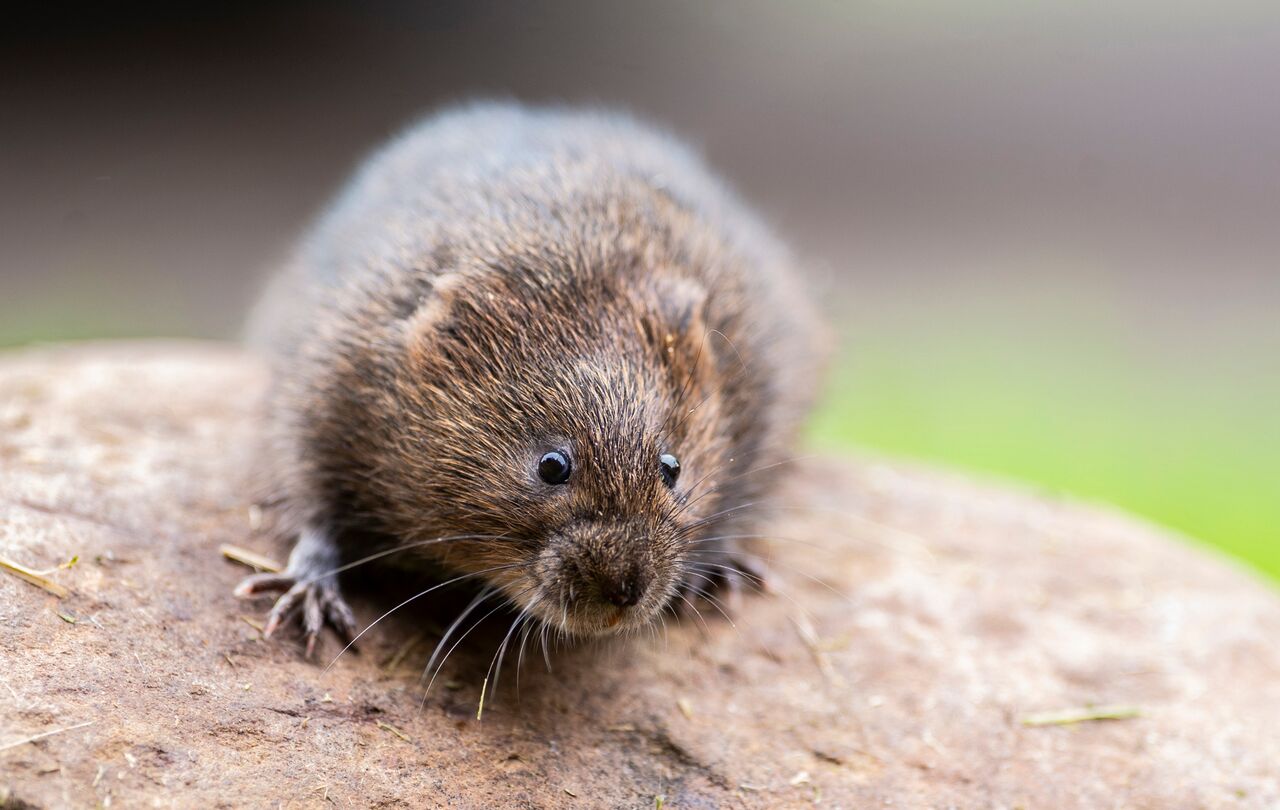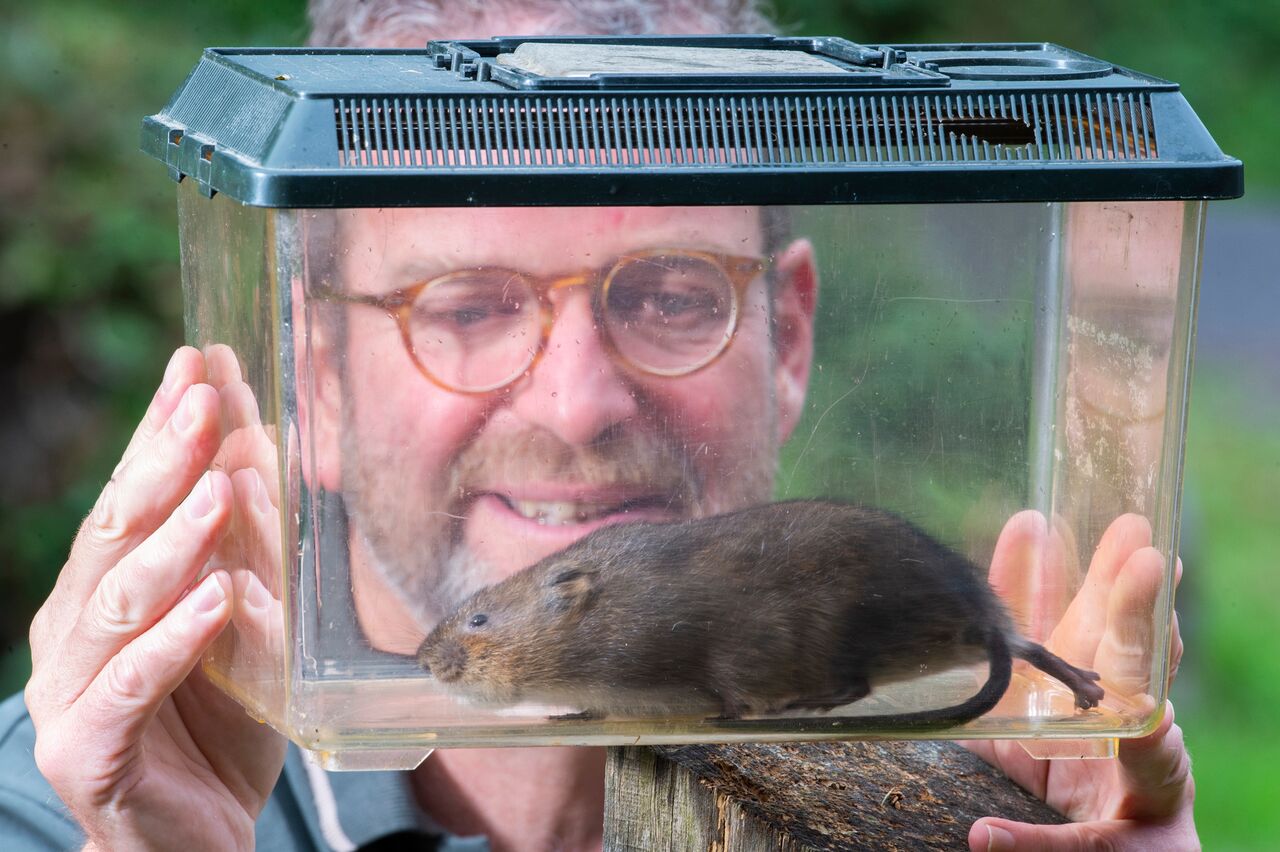
Water Vole. Photo: National Trust/Steve Haywood
Endangered water voles are returning to a stretch of river where they have been extinct for more than 30 years – thanks to a National Trust river and waterways project.
Once regularly spotted on Britain’s riverbanks, they are now the nation’s fastest declining land mammal, disappearing from 94 per cent of their former sites, largely due to increased urbanisation, predators and a decline in natural habitat.
But over the next few days, 150 will be released at six carefully chosen locations on the charity’s Holnicote Estate on Exmoor, Somerset – where they were last seen in the 1980s.
The National Trust’s £10million Riverlands project – an ambitious waterways restoration scheme – means these much-loved creatures will be provided with a healthy environment where they can breed and flourish.
This is the Trust’s first reintroduction of water voles in the South West and the second by the conservation charity in England in the past two years.
Water voles are an important and integral part of the ecology of Holnicote, contributing to the health and richness of wildlife.
It is hoped their reintroduction will provide future generations the chance to get to know the mammal – immortalised by Ratty in Kenneth Graham’s classic Wind in the Willows.
The precious new arrivals will be closely monitored to see how they are settling in. Rangers, special ‘vole-unteers’, students and the public are joining forces to monitor their numbers.
They will use simple field signs to record their presence and behaviour, from actual sightings and ‘plopping’ sounds as they dive in, to droppings, vole runs and burrows as well as grass blades nibbled off at distinctive 45 degree angles.
The streams and banks can be easily seen from many of the footpaths on the estate, and as water voles are active during the day they should once again become a regular feature in the area.
Alex Raeder, the National Trust’s South West Conservation Manager, said: “I remember being enchanted by these creatures as a child, and hugely welcome their return. They were once a vital part of the Holnicote ecosystem, and could be again. This ambitious project not only brings back to its rightful home a much-loved small animal, which sadly became locally extinct due to human activity, but also adds to the whole wealth of wildlife and enjoyment of this wild and stunning estate.
In true ‘Wind in the Willows’ style, these voles should soon be busy burrowing into the muddy banks and creating more natural-looking edges to streams with shady pools that are great for so many other small creatures. I very much look forward to making their acquaintance once more.”
These water voles, which have been specially bred from British animals by expert ecologists at Derek Gow Consultancy, will be released in sibling groups and breeding pairs. A further 150 will be released in spring.
Water voles became endangered due to the degradation, fragmentation and loss of habitat due to farming intensification and urbanisation after the Second World War.
They were also hunted by the North American mink which either escaped or had been deliberately released from the fur farms of the 1970s and 80s.
The water vole reintroduction is part of the National Trust’s ambitious new Riverlands project where it has committed £10 million to restoring and reviving five rivers across England and Wales, part of the Trust’s wider objective to restore 25,000 hectares of wildlife-rich habitats by 2025.
On the Holnicote Estate, Trust rangers and tenant farmers are working together to improve agricultural practices for the benefit of wildlife conservation and for floodplain and river management.
The Porlock Vale Catchment of the River Horner and River Aller lies in the north-east of Exmoor National Park.
The aim is to help slow water run-off from the uplands of Exmoor using natural flood management methods in the Porlock Vale streams, and reconnect the rivers with their floodplains in other areas.
Ben Eardley, National Trust project manager for Porlock Vale Streams, said: “This project will create new and enhanced wetland and woodland, a greater abundance of wildlife such as the water voles, and a reduction in flood risk for the community and for visitors to Exmoor.
We’ll work closely with local people and together understand the importance of these rivers to all of us, while providing long-term care for the complete catchment.”Ends.
NT Press release

Water Vole and Alex Raeder. Photo: National Trust/Steve Haywood
[registration_form]
I wish the project well. It is hard to accept that a species that was such a commonplace, familiar creature when I was a child playing in the local stream has become so rare in the subsequent decades. Sadly, it is only one of a whole host of species that have disappeared from much of our landscape over the same period.
Jonathan – same here! They were everyday sightings when I walked along the River Chew in north Somerset.
The article mentions the role of mink in the loss of water voles. It does not say that it is vital that catchments have this invasive species removed, and the way this is done is to live trap and kill them in an acceptable way. I personally am happy to fully recognise and accept this. Water voles were reintroduced to the Dee catchment here in Aberdeenshire after a successful campaign of eradication of mink. I’m sure that there are enough volunteers and organising groups to emulate the success here throughout the UK. I fail to understand why I still see mink elsewhere in my travels.
Alex – in the east of England we are expanding across most catchments and a couple of those involved are busy thinking about how to expand and tie-in all of the existing mink eradication projects. It is, as you say, a straightforward and vital part of catchment restoration. benefits other than watervole also include more kingfishers breeding successfully, and other birds such as moorhen, dipper, grey wagtail.
Remove the Mink and they re-colonise from nearby sites, as shown in the east of England. We have watervoles back from tiny remnant colonies along 15+km of river where we had no voles but plenty mink a decade ago.
I hope that Mink eradication is underway in the wider catchments of exmoor otherwise this is a waste of time.
So much catchment-scale work omits the non-natives issues, but the need for addressing the problem is fortunately now spreading.
If we could get anglers to stop killing otters, it would help combat the mink spread. Otters will kill a mink if they come across one, and are very effective in reducing mink numbers; shame the hunting, shooting, and fishing lobby keep on killing the damn otters. The “guardians of the countryside” strike again.
I too used to see Water Voles regularly when I was much younger on the R. Crimple near Harrogate and even at tiny farmland ponds near Knaresborough as well as the R. Lea catchment in Hertfordshire when visiting grandparents. I’ve not seen one for years and wish this project every success. If we could get rid of the alien Mink and I’m sure with effort we could, “Ratty” could come back to many places under his own steam as it were.
Louise, I totally agree. I now only maintain 2 rafts located on different cztchments to detect a return of mink. Males cant travel long distances in search of females who are more sedentary so removing one or the other will contribute. I developed a system when trapping using a cheap (less than £15) camera to send 3 photos a day which meant I did not have to attend unless 2 photos of the inside of the trap were missed or I had to close the trap if I was likely not to be able to attend. The battery lasted 3 weeks but I seldom had 3 weeks where I did not attend. This only works where there is phone coverage, but saved huge mileage. I did not ruin or have stolen any of the cameras luckily, and as each photo was clearly different from the last I was assured of complying with the requirement to inspect within 24 hours.